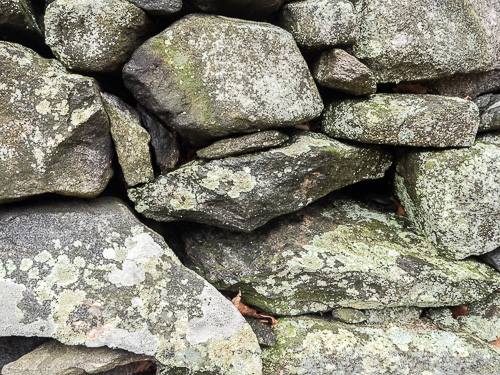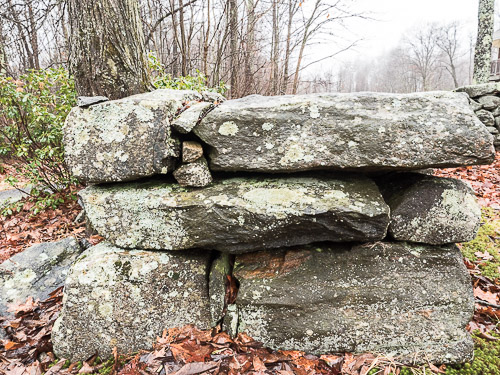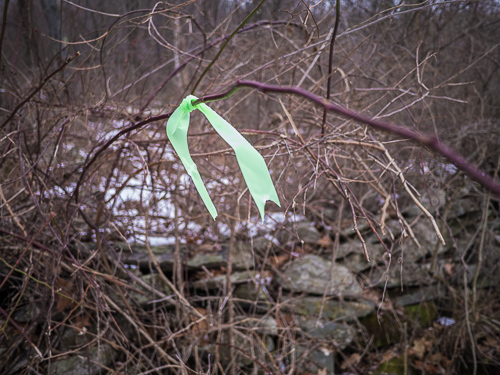I can’t pretend that this lives up to a philosophical assessment of Secular Buddhism, so in honor of Stephen Batchelor’s leadership for this conference, let me just call this my “confession.” Everything about my own life would appear to align with a secular form of Buddhism–I could be the poster child of the movement. Although I’ve been existentially engaged with Buddhism for half a century, I’ve never at any point been able to:
- Join a particular sect or lineage
- Take vows
- Wear medieval robes
- Adopt an Asian name
- Accept someone as my personal guru
- Take an interest in future lives or parinirvāna
- Or, due to a knee injury, even manage to sit in an appropriate Asian meditation posture
Talk about a “Buddhist failure!” The problem has been that whenever I’m tempted to do anything that looks traditionally Buddhist, I begin to feel like an imposter, someone posing as what he can’t possibly be. Yet even though all the surface signs of being a Buddhist are missing, I can’t help but conceive of myself as a Buddhist, a real Buddhist, albeit a contemporary American one. I’ve been meditating, studying Buddhism, and conceiving my life in Buddhist philosophical terms most of my life. And I grew up in a secular American family, so perhaps the advent of “secular Buddhism” saves me from a devastating form of identity confusion. Maybe this is my true sangha-finally.
Maybe, but something is missing for me, because if secular means “not religious” then my sense of impropriety returns. By any definition of religion that interests me, I am a religious person, or at least aspire to be. I can’t help but think that something important is lost if English speaking Buddhists make a particular point of identifying with secularity. Although a few secular Buddhists claim to see the religious element in secular Buddhism, secularity is so thoroughly identified in our culture with anti-religion that I don’t know how those connotations can be eclipsed. But perhaps the question is, should they be eclipsed, and to that my best answer is “I don’t think so.”
 Like Stephen Batchelor, I prefer large philosophical ways to understand what is happening in religion, rather than social, institutional, or behavioral definitions–definitions like Protestant theologian Paul Tillich’s image of being grasped by an ultimate concern, an unavoidable concern that connects directly to the very meaning of life. In that sense, religion is the spiritual dimension of human culture and life, a dimension that will always be present to some extent in some way. So in this sense there is a political dimension to culture, an economic dimension, a religious one, and others, and although individuals might not be particularly astute or competent in any one of these, that is, they might participate unskillfully and ignorantly, that doesn’t mean that this dimension of culture isn’t there or isn’t important. You can be politically agnostic, unengaged, clueless or incompetent, but that doesn’t mean that politics doesn’t affect your life, or that this dimension isn’t always in play in spite of your disengagement. You can be tone deaf in music, to use Richard Rorty’s image, and simply not understand music at all, just as you can be spiritually “tone deaf” and not understand what people are doing when they engage the “great matter of birth and death” as a religious concern. But that deficit is simply an individual’s own lack of awareness, not the absence of the domain of human life that might have been addressed. Thus, on this account, the religious dimension of human culture is no more optional than politics or an economy. That was Tillich’s point, and even if all religious institutions are currently inadequate to dealing with these issues, the human questions themselves don’t go away, just as widespread political corruption doesn’t get us out of politics. What contemporary Buddhists are well positioned to contribute is to show us how to identify that dimension, and how to help us find ways to cultivate and develop it so that in our time the religious dimension of human life could be re-discovered and re-envisioned.
Like Stephen Batchelor, I prefer large philosophical ways to understand what is happening in religion, rather than social, institutional, or behavioral definitions–definitions like Protestant theologian Paul Tillich’s image of being grasped by an ultimate concern, an unavoidable concern that connects directly to the very meaning of life. In that sense, religion is the spiritual dimension of human culture and life, a dimension that will always be present to some extent in some way. So in this sense there is a political dimension to culture, an economic dimension, a religious one, and others, and although individuals might not be particularly astute or competent in any one of these, that is, they might participate unskillfully and ignorantly, that doesn’t mean that this dimension of culture isn’t there or isn’t important. You can be politically agnostic, unengaged, clueless or incompetent, but that doesn’t mean that politics doesn’t affect your life, or that this dimension isn’t always in play in spite of your disengagement. You can be tone deaf in music, to use Richard Rorty’s image, and simply not understand music at all, just as you can be spiritually “tone deaf” and not understand what people are doing when they engage the “great matter of birth and death” as a religious concern. But that deficit is simply an individual’s own lack of awareness, not the absence of the domain of human life that might have been addressed. Thus, on this account, the religious dimension of human culture is no more optional than politics or an economy. That was Tillich’s point, and even if all religious institutions are currently inadequate to dealing with these issues, the human questions themselves don’t go away, just as widespread political corruption doesn’t get us out of politics. What contemporary Buddhists are well positioned to contribute is to show us how to identify that dimension, and how to help us find ways to cultivate and develop it so that in our time the religious dimension of human life could be re-discovered and re-envisioned.
On this revisionist platform, we should be doing what the Buddha did, what Jesus and Saint Paul did, what Martin Luther and Martin Luther King Jr. did, and what Gandhi did–open up new possibilities for what it might mean to be religious in our time. We should aspire to be religious reformers, not those who argue against acknowledging and cultivating this dimension of human life. If we allow religion to be identified with a particular form that it took in the past, which will by definition always be inadequate, we fail to take hold of our own moment in time. We don’t do that in the political realm with democracy, for example. If, from our contemporary point of view, the Greeks or the enlightenment era founders of modern democracies didn’t live up to their own principles, or mistook which principles were most important, we don’t turn our backs on democracy or claim that politics is dispensable; we just try to show what it would need to look like in our time. Although earlier democrats couldn’t see what history now allows us to see–gender equity, racism, human rights, and more–that doesn’t mean that we’re not in the historical lineage of democracy, a lineage of “dependent arising” that moves from their meanings to ours. That our religious inclinations will differ substantially from those in the past doesn’t lift us out of the domain of religion, given an appropriately comprehensive and historically astute understanding of religion. Things change, and that must include the religious dimension in which we face up to the “great matter” of the meaning of life and death.
In the light of this always questionable point of departure, let me just respond to several of the issues that have surfaced so far in “Secular Buddhism.”
1. Belief:
The Anglo-American tendency to define religion as a belief system is misleading, and quite modern. Belief only comes into play in religion when the shared mythic or narrative basis of culture is broken, when a community’s understanding of what is of unsurpassable importance has been disrupted or thrown into question. Only then do participants notice that they hold such beliefs and begin to investigate them or cling to them. Belief is a remnant, a belated tip of the religious iceberg. When we come to worry about our belief in God or in rebirth, the worldview that supports that belief is already disintegrating, and the movement of history is already bringing cultural transformation to bear. Religion as the willful effort to believe what is no longer believable is simply absurd. As contemporary people, we can only believe what we think to be true, and some ideas that we have inherited from traditional cultures like a theistic supreme being or the reincarnation of the soul are largely implausible in our time, for many of us, not even serious candidates for belief.
Authentic religious thinking, traditionally called theology in the west, is a form of second-order critical reflection on religious belief and practice. It aims to propose ideals for thought and practice that inspire full engagement with “the great matter.” When vibrant and healthy, this mode of reflection focuses less on what is wrong with the past and more on how we might make our best moves into the future. So when Stephen Batchelor redefines the “four noble truths” as “four noble tasks,” displacing them as propositions to be believed or disbelieved, and thus situating them in the domain of practice, he is onto something important about the depth dimension of religion. Belief is neither the essence of religion nor the primary focus of a flourishing life, and contemporary western thinking about religion needs to reorient itself in recognition of that. That reorientation, however, will not be successful if it simply dismisses the role of belief altogether. Although not the essence of religion, belief is far from irrelevant, and given that, let me move to another point.
2. Praxis:
As Buddhists of whatever kind, we should be skillful at noticing an effective interdependence between theory and practice, and when we do that we notice the mutually shaping relationship between what we think or assume and what we do, that is, between beliefs and practices. What we come to believe is shaped by our practices and the substantial background of culture that develops through all of our activities. An important Aristotelian point here is that through our practices and habits we develop dispositions so attuned to some dimension of the world that we perceive things in a certain way and therefore hold beliefs of a certain obvious kind. Additionally, however, all doing presupposes forms of believing that make these particular practices seem worthwhile. We practice meditation of a certain kind or write essays of a certain kind or raise our children the way we do because our current beliefs are structured in such a way that this makes sense to us. Normally we can give reasons for our practices based on our current beliefs, and when we can’t, we usually alter or terminate the practice. Belief will always surface in every human context. If the “four truths” become “four tasks,” we must believe that these are the tasks appropriate to our time and situation, and believe that taking them up will eventuate in something worthwhile. The “Buddhism without beliefs” that Stephen Batchelor articulates so persuasively is a praxis based form of Buddhism without required beliefs, without the dogmatic imposition of beliefs from previous eras that in our time have become unbelievable. But that form of Buddhism is based on beliefs that life is best practiced in openness, without clinging, and that in our time ‘awakening’ is best characterized as a process of opening, release, or letting go.
The rigid dichotomy between believing or thinking and praxis is further undermined when we recognize that one of our most important practices is thinking–conceptual practice–even the formation and reformation of coherent, useful beliefs. The practice of thinking is essential and when fruitful, leads to beliefs that disclose something important about our own here and now acts of existence. Unreflective praxis is as dangerous as unreflective belief–both are examples of unwarranted, unjustified blind faith. Practices ossify and become dogmatic just like beliefs, but we are less susceptible to that danger when we engage in conceptual practices that are structured to encourage openness and fearless engagement. Asian Buddhists would have been better off if they had put more emphasis on the fact that the organizational structure for early Buddhism placed philosophical, reflective practice under the broader rubric of meditative praxis. Thinking with clarity and vision is one form of meditation that requires cultivation just like the others. Neither orthodoxy nor orthopraxis are healthy developments, but both theory and practice–thoughtfulness and action–will continue to be the central domains of cultivation for our engagement with the “great matter of birth and death.”
3. Secularity and Post-theistic Religion:
Secularity–our time in history–is the age of science and technology. To the extent that we’re secular, we no longer experience ourselves as being looked upon, overseen. Modern subjectivity is secular insofar as we experience our own human agency as supreme–we are the agents of creation and strive toward greater and greater control. Hence Kant’s definition of enlightenment as maturity, growing up to capitalize on the rational powers in our own hands. The danger that we all vaguely sense in this historical development is that our drive to control everything is precisely what we can no longer control, our own will to power may already be out of control. We see the cosmos as being at our disposal, something there for us that we can manipulate towards our ends and desires. By aligning itself so closely with science, secular thinking tends to identify truth with the empirical, the calculable, the measurable, and thus the spiritual dimension of human life–questions about the very meaning of human life–begin to seem illusory. Because no other vision of the Good has yet arisen to replace after-life in heaven or a cycle of rebirths/final nirvana, consumerism has tended to become our default mode of fulfillment and this is now the global faith of our secular world.
Nietzsche hints in this direction in his famous death of god passage in the Gay Science. The madman proclaims the death of god and is distraught–he cares deeply and fears the repercussions of this loss. He assumes that with this loss the grounds for higher values have been undermined. The jeering atheists who just laugh at him are thoughtless, smug, and self satisfied in the secular life that they’ve already adopted. They are perfectly content not to strive for higher values or test their lives in view of ethical norms; they are happy not to discipline themselves to ponder the meaning of birth and death. They much prefer their current pursuit of greed, aversion, and pleasurable delusion. Although the madman is crazed by the enormous implications of his insight, the secular atheists are worse off–they’re already dead to any value beyond the most banal forms of self-satisfaction.

In response to the death of god, that is, to our inability to assert the existence of god or any other absolute foundation in view of the modern practice of critical thinking, two paths have opened up. The first is reactionary, a form of nostalgia for the pre-modern past that manifests in fundamentalist, dogmatic attempts to live as though we still reside in some earlier epoch, as though we could still live medieval lives. The second is secularity, which simply accepts the inevitable, rejects the religious past, and tries to make due by focusing elsewhere. Both reactions can’t help but adopt modern modes of thinking and talking about religion. Both theists and atheists assume that faith is a certain kind of belief–certainty about the truth of otherworldly, supernatural propositions. They both proceed as though the question of the existence of god is ultimately an empirical hypothesis about what really exists or doesn’t exist, and like all good modernists, both pursue evidence for their convictions about belief and disbelief. While the hopelessness of the theistic effort is obvious, we should recognize that contemporary atheism is equally immersed in an untenable, uninspired vision of who we are as human beings.
In the midst of this standoff between theism and atheism, a new and as yet only vaguely formed possibility has emerged–the possibility of post-theistic forms of religious life. While atheism is still caught in the grasp of what it must deny, caught in a binary with theism, post-theism steps onto new ground. Stephen Batchelor’s ground breaking Confession1, is, from my point of view, really that of a post-theistic Buddhist, where, as he says, Buddhism’s “theistic” leap of faith entails afterlives, afterworlds, and other forms of imagined escape from the here and now. Although he does proffer a couple of arguments against Buddhist afterlife, mostly, like me, he shrugs his shoulders and confesses that he isn’t really interested and has more important things to think about. He is “post” wanting to think about it so that rebirth isn’t even a candidate for belief or disbelief. Nietzsche’s death of god narrative drops the first post-theistic hint. This hint, taken up a half century later by Heidegger, is that the death of god might allow for a deeper, richer, post-metaphysical sense of the divine than any found in traditional religions, that this “death” clears the ground for new, revolutionary forms of spirituality that were unimaginable so long as the structures of theism and afterlife were the primary religious concerns.
That, it seems to me, is our historical assignment, our calling: to affirm the religious dimension of human life by re-envisioning and reformulating spiritual sensibilities at the cutting edge of contemporary thought, practice, and experience. In contrast to the triumphalism and dogmatism that characterize both theism and atheism, a thoroughly post-theistic religious practice would necessarily be experimental, moving forward in humility and openness of thought towards a range of new possibilities for enlightened human life, rather than a search to find the one correct view or practice. It would begin in contemplative practice in order to build habits of mind and body attuned to openness and inclined to question the instrumental character of current common sense which imagines ever new means but never ends, leaving us without ideals and goals suitable to our time. In this respect a new post-secular orientation would cultivate respect for traditional cultural practices through which things in the world mattered in ways other than our instrumental use of them. In this sense, post-secular, post-metaphysical thinking would be meditative, and uniquely attuned to the imaginative dimensions of historical consciousness. Contemplating early religious expressions in text and art, not as believers or critical disbelievers, but as those in search of their own lineage, asking who we are and who or what we might become, given patterns of “dependent arising” that have given rise to our identity and situation here and now. In this light our interest at this conference in the Nikāyas is one among many promising points of departure for post-theistic forms of spirituality.
Post-theistic religious engagement would recognize that the romantic spirituality that gave rise to our interest in Buddhism in the first place–the quest for authenticity, for wholeness, for self-actualization and self-realization–still harbors the hope of escaping from history and the contingencies of finite beings. Post-romantic contemplation would recognize that human beings and human cultures are never complete, not complete-able because finite; that there is no final wholeness, since like evolution itself, there is always more to come. It would cultivate the idea that the universe is still experimenting with us and through us, and still sharpening capacities for more comprehensive awareness. This kind of meditative historical consciousness will be our best cure both for lack of religious imagination and for the barren scholasticism that threatens to engulf academia today, and will help us to realize that human beings have already turned out to be far more malleable than our static conceptions of human nature ever allowed.

I understand that the corrupt and maladaptive character of many modern religions and the anti-religious bias of contemporary culture make it tempting to go secular–to refer to the Buddhism of our time as “Secular Buddhism” so that we’re not associated with all the anachronistic, supernatural thinking that religion often entails. When the religion of one’s childhood remains childish, it is natural to think that religion is essentially or constitutionally childish. But it need not be, and to assume that it is would be an essentialist, historical mistake. Religions, including Buddhism, are empty of a fixed nature; they are impermanent, and come to be whatever they are dependent on factors that may be or become otherwise. So with the Japanese Buddhist leader, Shinran, I’m inclined to consider Secular Buddhism an illusory “easy path,” and to encourage all of us to take the more difficult route of re-envisioning religion for our time. In other words, to be willing to continue to call what we’re doing and creating just Buddhism–contemporary Buddhism, to be sure, but leaving open all other identities that might inappropriately predetermine what Buddhism will become. It seems to me that the most interesting and most revolutionary contribution we can make is to envision and cultivate a contemporary religious sensibility grounded in the long non-theistic tradition of Buddhist thinking and praxis that is fully in accord with the forms of suffering and the possibilities for awakening now becoming available in our time.
Finally, we can hear traditional Buddhists wanting to ask: Is this still Buddhism? Two responses seem important:
1. Yes, of course it is. Throughout the two and a half millennia of Buddhist history, all those inspired by any element of the Buddhist tradition who called themselves Buddhists have been Buddhists. Buddhism has no static essence and changes under different historical conditions. Imagine the uproarious laughter of a 10th century Chan master in China when a new Buddhist missionary shows up from India proclaiming that what they are doing isn’t “really” Buddhism. HA!
2. When asked whether it is still Buddhism, another fitting response would be: “Who cares?” We should care about suffering, greed, hatred, and delusion, and about the current prospects of awakening to larger, more comprehensive forms of life. When, in the Vimalakirti sutra, Shariputra comes to Vimalakirti’s house and wonders where he will sit because there are no chairs, Vimalakirti asks whether he cares about chairs or the dharma. Is he concerned primarily with sitting or with awakening? The quality and depth of what we care about defines who we are and shapes our culture. The quality of what is taking shape in “Secular Buddhism” is impressive, and well-attuned to our time. Only, in my view, the best parts of it aren’t secular insofar as they aspire to face directly the “great matter of birth and death.” Nor should they be.
Dale S. Wright teaches the religious traditions of East and South Asia–Hinduism, Buddhism, Confucianism, Taoism, Shinto, and others–at Occidental College, focusing on the historical development and philosophies generated in Japan, Korea, China, Tibet, India, and the countries of Southeast Asia. He also teaches courses related to the philosophy of religion. His area of specialization and research is Buddhist philosophy, particularly the types of Buddhism that were developed in China and Japan–Hua-yen Buddhism and Zen or Chan Buddhism. Wright is the author or co-author of a number of books, including The Six Perfections: Buddhism and the Cultivation of Character (2009) and Philosophical Meditations on Zen Buddhism (2008).
1. Confession of a Buddhist Atheist, Stephen Batchelor, Spiegel & Grau, 2011
